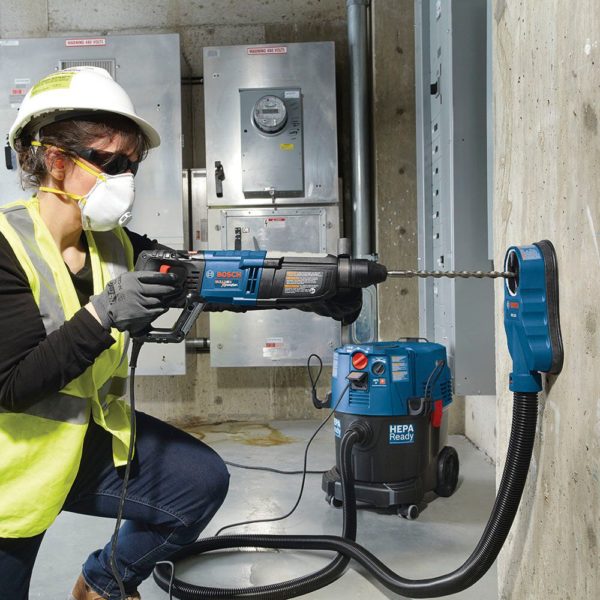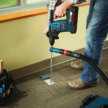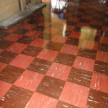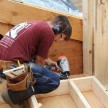Silica The NEW Asbestos
Silica and Compliant Dust Control
What do the “Largest Construction Tragedy in US History” and “The New Asbestos” Have In Common?
Worst Construction Tragedy in US History – The Hawks Nest Tunnel
In 1931, a project was started in Gauley Bridge, WV to create a tunnel under Gauley Mountain to divert the New River to a dam and create electricity for an industrial plant. The Hawk’s Nest Tunnel Project soon discovered that the mountain contained an almost pure deposit of a valuable mineral called Silica. This pure mineral was a key and very expensive ingredient in electro-processing steel. The scope of the Hawk’s Nest tunnel project was soon expanded and the tunnel made much larger than originally needed in an effort to capture enough of the pure Silica for sale to the steel industry in an effort to offset the cost of the tunnel construction.
This all makes sense at an economic level. However, the workers that drilled, blasted and mined the Silica were not wearing any dust protection what so ever. Of the 3,500 workers that dug Hawk’s Nest, 476 died of silicosis almost immediately and nearly 2,500 died within a decade. Their deaths were directly attributable to the effects of Silica in their lungs.
An interesting recollection by some of the workers interviewed were that they were periodically stopped for a “settling periods” after which the supervisory and management personnel inspected the tunnel progress after the drilling and blasting dust had settled to the ground. During these inspections, virtually all of the management personnel wore dust masks during the inspections.
Silica The NEW Asbestos
The Countdown is On. Are You and Your Company Ready?
Silica has been called the “New Asbestos”, and the U.S. Department of Labor and OSHA have issued rulings on reducing the permissible exposure limits for workers in our industry. These regulations go into effect on the 27th of September. As a measure of the seriousness of this airborne contaminant, OSHA has reduced the exposure limits to one-fifth of the existing amounts. These new exposure limits are 50 micro-grams per cubic meter over an 8-hour shift.
Limiting Silica Exposure – How Much?
So what does that limit really mean? It means that during every 8 hour day you must limit your workers exposure to silica dust to about the size of 1/20th of a grain of salt.
Yeah, right. How do I do that? Interestingly, the solutions that came out of the Hawk’s Nest investigations in the 1930s are still the two most effective means of limiting exposure today. These recommendations are to use water to wet the concrete/silica dust and to vacuum/collect the dust at the source.
Contained in the new OSHA regulations are two ways of ensuring regulatory compliance:
- First, the employer can create and test new methods of compliance, get them approved by OSHA and then implementing them in the field. (Who has that kind of time and money?
- The other way is to adopt the methods that OSHA has listed in Table1 of the new regulations. This table outlines the Equipment that generates the dust/Work Task, gives the OSHA recommended “Engineering and Work Practice Control Methods” and gives the Required Respiratory Protection and Minimum Assigned Protection Factor associated with the duration for the exposure.
Implement Silica Safety Controls
If you fully and properly implement the engineering controls, work practices and respiratory protection outlined, you are within compliance with the new regulation.
Get real familiar with the tools you are using! You are compliant if you follow the guidelines of Table 1. But you should know that the regulation puts a solid responsibility on both you and your tool manufacturer. For in each Table 1 Work Practice Control Method is the following language:
“Operate and maintain tool in accordance with manufacturer’s instructions to minimize dust emissions.”
So the demolition hammer you bought in 1997 had a set of instructions to guide you on minimizing dust emissions, right? And you still have that manual, right? And you still have the rubber baffle thing that was in the kit., right? The good news is the tool industry recognizes the problem and is taking steps to get their act together to be in compliance. The bad news is you are probably going to spend some serious money on compliant tools and training your workers in how to use the new dust devices. And you are going to spend some money keeping these dust devices in working order and available for use at all times that dust is generated.
Using Respirators
And you need to get real familiar with Respirators and things like APF, MUC and PEL! So what are all of these terms? OSHA has put out a document to define all of this terminology. It is titled “Assigned Protection Factors for the Revised Respiratory Protection Standard” and a link will be provided for you to reference this document.
Osha provides the following explanation of these terms: “Assigned Protection Factor (APF) means the workplace level of respiratory protection that a respirator or class of respirators is expected to provide to employees when the employer implements a continuing, effective respiratory protection program as specified by this section.
Maximum Use Concentration
Maximum Use Concentration (MUC) means the maximum atmospheric concentration of a hazardous substance from which an employee can be expected to be protected when wearing a respirator, and is determined by the assigned protection factor of the respirator or class of respirators and the exposure limit of the hazardous substance. The MUC usually can be determined mathematically by multiplying the assigned protection factor specified for a respirator by the permissible exposure limit (PEL), short-term exposure limit, ceiling limit, peak limit, or any other exposure limit used for the hazardous substance.
The MUC for respirators is calculated by multiplying the APF for the respirator by the PEL. The MUC is assigned protection factors for the revised respiratory protection standard 3 the upper limit at which the class of respirator is expected to provide protection.
Whenever the exposures approach the MUC, then the employer should select the next higher class of respirators for the employees. Employers must not apply MUCs to conditions that are immediately dangerous to life or health (IDLH); instead, they must use respirators listed for IDLH conditions in paragraph (d)(2) of this standard. When the calculated MUC exceeds the IDLH level for a hazardous substance, or the performance limits of the cartridge or canister, then employers must set the maximum MUC at that lower limit.”
The Future of Dust Control
A look at the future of dust control: Manufacturers are responding to these regulations and contractors both large and small will be taking on the added responsibilities for equipment, procedures and training. Those General Contracting firms with very formal safety programs will require that Job Hazard Analysis (JHA) scopes that they require will include the new dust control measures. Further, subcontractors must develop a Written Exposure Control Plan, offer medical exams to highly exposed workers, and train workers on silica risks and how to limit exposures.
Note – Some images of the types of Compliant Dust Control equipment and respirators: (Our thanks to Bosch for these images.)













